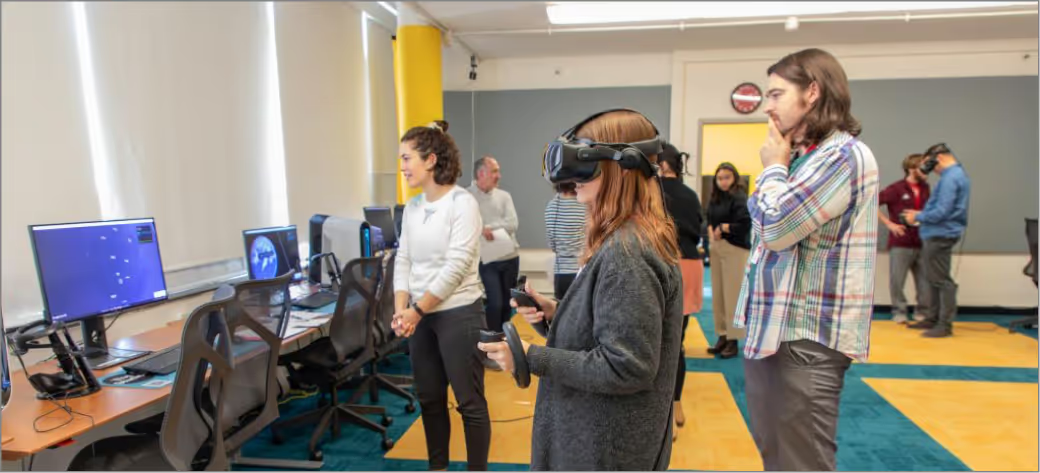Our Immersive Experience Center addresses these challenges by offering a comprehensive suite of AR/VR solutions specifically tailored to the educational needs of colleges and universities.
The Jio Glass, lightweight and versatile, supports both VR and AR modes. With just 68 grams of weight, it offers extended comfort during long learning sessions. It also comes with an SDK (Software Development Kit) to allow students to create and deploy immersive content, enhancing their practical learning experience. Through 3D models and interactive simulations, the Experience Center bridges the gap between theory and practice.
The XR Learn platform enables custom course creation with multimedia content, including videos, 3D models, and quizzes. With real-time analytics for faculty and accessible content for students across multiple devices, this platform is a comprehensive tool that supports immersive, tailored learning experiences. Courses can be accessed via Jio Glass and Jio Dive, ensuring flexibility in how students interact with the material.
The Experience Center offers a 360° VR walkthrough of the campus, complete with interactive hotspots showcasing key facilities like labs, libraries, and classrooms. Prospective students can explore the campus from anywhere, enhancing the admissions process by providing a fully immersive virtual tour available on web platforms, Jio Dive, and Jio Glass.
Our Experience Center offers customized VR/AR simulations that allow students to engage with interactive 3D models. These simulations provide a risk-free, cost-effective alternative to physical lab experiments while helping students visualize complex academic concepts. The simulations can be continually updated, ensuring they remain aligned with the latest technological advancements and curriculum changes.
Immersive learning technologies, such as AR/VR, significantly improve student engagement by making lessons interactive. These tools provide students with the ability to practically apply theoretical knowledge, preparing them for real-world challenges and improving their overall comprehension.
By minimizing the need for physical labs and reducing the expenses associated with outdated equipment, the Experience Center offers long-term financial benefits. The institution can save on lab maintenance and materials, redirecting resources to other critical areas.
With immersive technology at their disposal, institutions can set themselves apart in a competitive education market. Experience Centers attract prospective students by offering advanced, hands-on learning opportunities, which enhances both student recruitment and retention.
Interactive learning leads to better understanding, retention, and academic performance. Students who actively participate in immersive learning sessions are more likely to perform better in exams and develop practical skills for their future careers.
The AR/VR tools in the Experience Center can be easily updated as technology evolves. This scalability ensures that the center remains relevant, future-proof, and adaptable to changes in the curriculum and educational demands.

The integration of Experience Centers in colleges and universities presents a forward-thinking approach to education. By leveraging AR/VR technologies, these centres enhance student engagement, offer practical learning experiences, and give institutions a competitive edge. The investment in such immersive technology not only prepares students for the future but also makes education more cost-effective and accessible. As technology continues to evolve, Experience Centers will play a critical role in shaping the future of education.